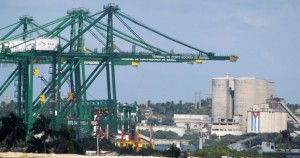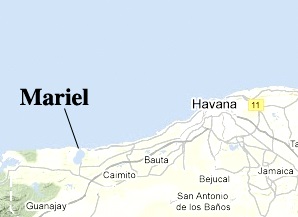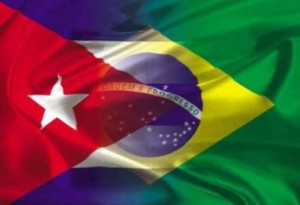 Havana, Cuba, October, www.cubanet.org – This coming November 1st the legislation published in the Official Gazette regarding the Mariel Special Development Zone will go into effect. As usual with the regime, the Council of State and of Ministers, and the Ministers of Science, Technology and the Environment, or Finance and Prices, of Interior and Labor, and of Social Security will also issue their corresponding regulations. A more than 30-page binder of regulations, very difficult to assimilate, even by the writers themselves.
Havana, Cuba, October, www.cubanet.org – This coming November 1st the legislation published in the Official Gazette regarding the Mariel Special Development Zone will go into effect. As usual with the regime, the Council of State and of Ministers, and the Ministers of Science, Technology and the Environment, or Finance and Prices, of Interior and Labor, and of Social Security will also issue their corresponding regulations. A more than 30-page binder of regulations, very difficult to assimilate, even by the writers themselves.
But what it does make clear is that Cubans living on the island have no right to invest, they can only serve as workers.
There are some features which are obvious and which ensure that the Zone is not intended for now, but for the future; there appears to be something like a hope for an understanding with the Americans, because it could be a base for ships to enter the United States of America, coming from Panama Canal.
However, it does not address how they are going to attract a massive infusion of capital, technology and the transfer of goods to the nearest principal market, the U.S., without having resolved the embargo.
 Will it benefit ordinary Cubans?
Will it benefit ordinary Cubans?
The Zone covers 180 square miles and could be determined only by persons having a knowledge of cartography, on a map, that in order to show the site details a footprint consisting of points, which in turn are coordinates. The municipality of Mariel is only 150 square miles, ranking 139th in the country in size, and the local population that would benefit would be very few, since the whole of the province Artemisa has just over half a million people.
 Perhaps the reason for choosing this Zone was to reduce the impact on the population of such a large area of foreign businesses, although thinking that no immediate development is expected.
Perhaps the reason for choosing this Zone was to reduce the impact on the population of such a large area of foreign businesses, although thinking that no immediate development is expected.
The payment for a workforce will be agreed upon between the designated Cuban entity and the concessionaire in Cuban pesos (CUP), considering jobs of similar complexity in the demographic area of the foreign user, salaries paid to workers in Cuba and the expenses incurred by the employer in management to guarantee the supply of a qualified workforce, which involves recruitment, selection and training among other aspects.
Separating Cuban workers from the money they earn is guaranteed, when it’s stated that wages paid will start from a minimum, equivalent to the average wage at the end of the previous year in Havana province, at the time negotiations occur. It is clear in the legislation that neither the workers nor the unions will participate in these negotiations, as there isn’t the slightest attempt to address the working class and its representatives.
The Zone is subordinated directly to the Council of Ministers, giving them wide autonomy, and making no specific reference to its command structure. Presumably, it’s principal leaders are already designated, because the chief is equivalent to a minister, with great power; but nothing has been disclosed.
We can get an idea of the decision-making power of the Chief of the Office, at the national level, in the fact that he has the power to summon the bodies of the Central Administration of the State and of the governing bodies of each of the activities that take place in the Zone; and relations with the Provincial Assembly of Artemis and local governments are not subordinate, implying that these governing bodies lose almost its jurisdiction in the Zone.
Although we will have to wait to find out the extent all these changes will have on that Zone, it is clear that within it the the long road from socialism to capitalism is circumvented, which as we know well is not built.
Arnaldo Ramos Lauzurique and Martha Beatriz Roque Cabello
From Cubanet, 22 October 2013
